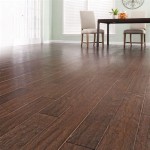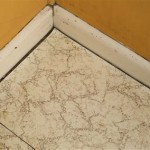How To Whitewash Wooden Floors
Whitewashing wooden floors offers a method for brightening a room, imparting a rustic aesthetic, or providing a neutral base for various décor styles. The technique involves applying a diluted coat of white paint or a specialized whitewashing product to the wood surface, allowing the natural grain to remain visible. This process differs from painting, where the intention is to completely cover the existing wood, resulting in an opaque finish. Before commencing, it's crucial to understand the intricacies of preparing the floor, selecting the appropriate materials, and applying the whitewash to achieve a desirable and durable outcome.
Successfully whitewashing wooden floors hinges on proper execution of several key steps. These encompass thoroughly preparing the existing floor surface, selecting the appropriate type of whitewash solution, applying the solution evenly, and protecting the finished surface with a sealant. Failure to address any of these stages can lead to unsatisfactory results, including uneven coverage, peeling, or a lack of durability.
Preparing the Wooden Floor for Whitewashing
Proper preparation constitutes the foundation for a successful whitewashing project. This stage involves cleaning, sanding, and potentially priming the wooden floor to ensure optimal adhesion and a consistent finish. The condition of the existing floor significantly impacts the extent of preparation needed. For instance, heavily varnished or waxed floors necessitate more aggressive sanding compared to floors with a light, worn finish.
The initial step involves a thorough cleaning. Vacuum the floor meticulously to remove dust, dirt, and loose debris. Subsequently, wash the floor with a wood cleaner specifically designed to remove grease, grime, and any lingering residues. Allow the floor to dry completely before proceeding to the next stage. This cleaning process is vital because any remaining contaminants can impede the adhesion of the whitewash solution and create an uneven finish.
Sanding the floor serves to create a porous surface that allows the whitewash to penetrate the wood fibers effectively. The grit of sandpaper required depends on the existing finish. For floors with a thick varnish or polyurethane coating, start with a coarse grit sandpaper (e.g., 40-60 grit) to remove the bulk of the finish. Progress to a medium grit sandpaper (e.g., 80-100 grit) to smooth out the surface and remove any scratches left by the coarser grit. The final sanding should be performed with a fine grit sandpaper (e.g., 120-150 grit) to create a uniformly smooth surface that is receptive to the whitewash.
When sanding, utilize a floor sander for large areas and an orbital sander for edges and corners. Ensure consistent sanding pressure across the entire floor to avoid creating uneven patches. After sanding, vacuum the floor thoroughly to remove all sanding dust. Follow this with a tack cloth to pick up any remaining fine particles. The removal of all sanding dust is imperative, as any residual dust will compromise the adhesion and appearance of the whitewash.
In some instances, priming the floor may be necessary. Priming is particularly recommended if the wood is naturally oily or has been previously stained with a dark color. A wood primer helps to seal the wood, prevent tannin bleed-through, and create a uniform base for the whitewash. Choose a primer specifically formulated for wood floors and apply it according to the manufacturer's instructions. Allow the primer to dry completely before proceeding to the whitewashing stage.
Selecting the Right Whitewash Solution
The choice of whitewash solution significantly influences the final appearance and durability of the whitewashed floor. Several options are available, each with its own characteristics and suitability for different types of wood and aesthetic preferences. These options include diluted latex paint, specialized whitewash stains, and lime wash.
Diluted latex paint offers an affordable and readily available option. To create a whitewash solution using latex paint, mix white latex paint with water. The ratio of paint to water typically ranges from 1:1 to 1:3, depending on the desired opacity. A higher water ratio will result in a more transparent finish, allowing more of the wood grain to show through. It is crucial to use a flat or matte finish latex paint to avoid a glossy appearance. Glossy paints tend to obscure the wood grain and can appear artificial.
Specialized whitewash stains are formulated specifically for whitewashing wood. These stains typically contain pigments and binders that are designed to penetrate the wood fibers and create a durable, even finish. Whitewash stains are available in a range of white shades, from bright white to off-white and antique white. They often provide better adhesion and durability compared to diluted latex paint. Follow the manufacturer's instructions carefully when applying whitewash stains.
Lime wash, traditionally used on walls, can also be adapted for use on wooden floors. Lime wash provides a unique, chalky appearance with subtle variations in color. It is highly breathable and allows the wood to breathe, which can be beneficial in humid environments. However, lime wash requires careful application and may not be as durable as latex paint or specialized whitewash stains. It also typically requires sealing with a specialized lime wash sealant to protect the finish. Ensure the wood is compatible with lime wash before application, as some wood types may react adversely. Lime wash is considerably more work and may not be ideal for beginners.
Before committing to a particular whitewash solution, it is advisable to test it on an inconspicuous area of the floor to ensure that the color and finish are satisfactory. This test patch will also allow you to assess the wood's reaction to the solution and adjust the dilution ratio or application technique as needed.
Applying the Whitewash to Achieve the Desired Effect
The application technique plays a crucial role in achieving the desired whitewashed effect. The method of application, the number of coats, and the timing of wiping or blotting the solution all affect the final appearance. Several methods can be employed, including using a brush, roller, or rag. The choice of method depends on the desired texture and the type of wood.
When using a brush, apply the whitewash solution in the direction of the wood grain. Work in small sections and avoid applying too much solution at once. After applying the solution, immediately wipe away the excess with a clean cloth or rag. This step is crucial for revealing the wood grain and preventing the finish from becoming too opaque. The timing of wiping is critical; wiping too soon may remove too much of the whitewash, while wiping too late may result in a streaky or uneven finish. Experiment with the timing on a test patch to determine the optimal wiping time.
Using a roller can provide a more even and efficient application, especially for large areas. Apply the whitewash solution in thin, even coats, rolling in the direction of the wood grain. As with the brush method, immediately wipe away the excess with a clean cloth or rag. Ensure that the roller is clean and lint-free to avoid transferring lint to the floor. Using a low-nap roller is preferred to minimize the amount of solution applied in each coat.
Applying the whitewash with a rag offers a more rustic and textured finish. Dip a clean rag into the whitewash solution and apply it to the floor in a swirling or circular motion. Immediately wipe away the excess with a clean rag. This method allows for greater control over the opacity and texture of the finish. It can also create a more distressed or aged look, depending on the application technique.
The number of coats of whitewash required depends on the desired opacity and the type of wood. Typically, one to two coats are sufficient to achieve a subtle whitewashed effect. For a more opaque finish, additional coats may be necessary. Allow each coat to dry completely before applying the next coat. Lightly sanding between coats with a fine-grit sandpaper (e.g., 220 grit) can help to create a smoother and more even finish. Always remove all sanding dust before applying the next coat.
Protecting the Whitewashed Floor with a Sealant
Protecting the whitewashed floor with a sealant is essential for preserving its appearance and durability. Sealants provide a protective barrier against moisture, scratches, and spills, preventing the whitewash from wearing away over time. Several types of sealants are suitable for whitewashed floors, including polyurethane, water-based acrylic, and penetrating oil finishes.
Polyurethane offers excellent durability and resistance to scratches and stains. It is available in both oil-based and water-based formulations. Oil-based polyurethane provides a warmer, amber-toned finish, while water-based polyurethane is clear and non-yellowing. Polyurethane is typically applied in multiple coats, with light sanding between coats to ensure a smooth and even finish. Ensure adequate ventilation during application, as polyurethane can emit strong fumes.
Water-based acrylic sealants are a more environmentally friendly option that offers good durability and a clear, non-yellowing finish. They are also low in VOCs (volatile organic compounds), making them a safer choice for indoor use. Water-based acrylic sealants are typically easier to apply than polyurethane and dry more quickly. However, they may not be as resistant to scratches and stains as polyurethane.
Penetrating oil finishes, such as tung oil or linseed oil, penetrate the wood fibers and create a protective barrier from within. They offer a natural-looking finish that enhances the wood grain and provides a soft, matte sheen. Penetrating oil finishes are relatively easy to apply and maintain, but they may require more frequent reapplication than polyurethane or water-based acrylic sealants. Allow the oil finish to completely cure before subjecting the floor to heavy traffic.
Before applying the sealant, ensure that the whitewash is completely dry. Follow the manufacturer's instructions carefully when applying the sealant. Apply thin, even coats, working in the direction of the wood grain. Allow each coat to dry completely before applying the next coat. Lightly sanding between coats with a fine-grit sandpaper can help to create a smoother and more even finish. Always remove all sanding dust before applying the next coat or using the floor.

Wood Floor Refinishing And Whitewashing The Honeycomb Home

Diy Whitewashed Wood Floors Renovation Semi Pros

Nostalgiecat How To Whitewash Wooden Flooring

Diy Whitewashed Wood Floors Renovation Semi Pros

Sanding And Whitewashing Wood Floors

Diy Whitewashed Wood Floors Renovation Semi Pros

How To Whitewash Wood In 3 Simple Ways A Piece Of Rainbow

How To White Wash Lime Wood Flooring Oak Timber

How To Get The Perfect White Wash Effect On Your Wooden Floor Art Of Clean 01223 863632

How To White Wash Lime Wood Flooring Oak Timber
Related Posts








